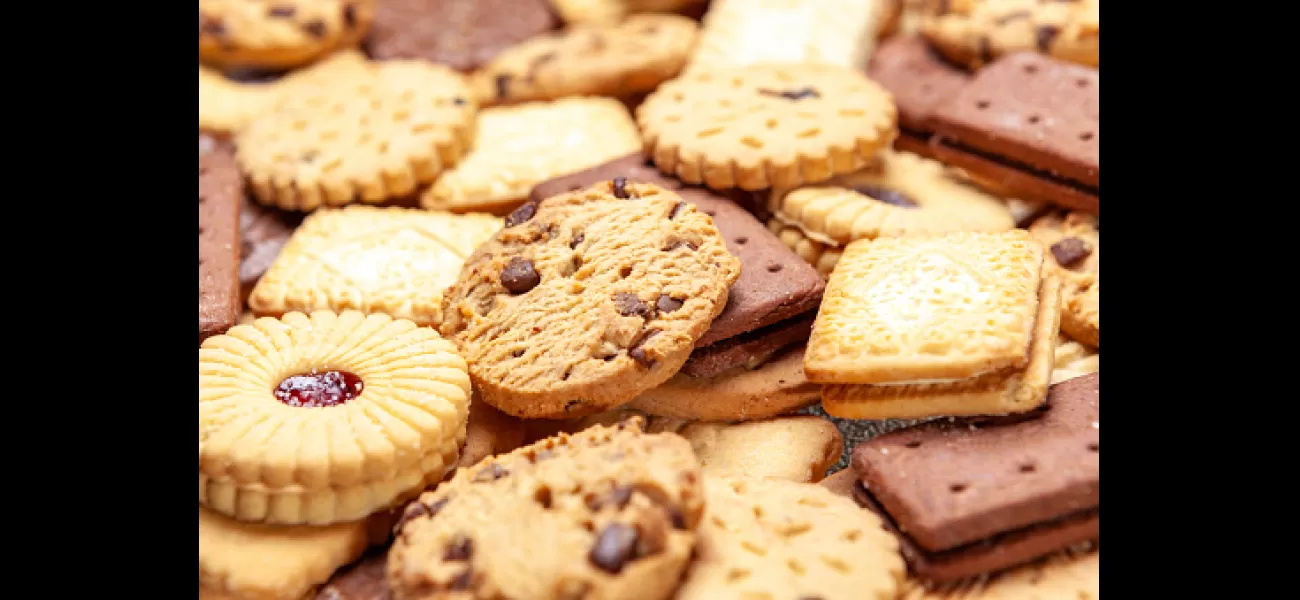Researchers have discovered the secret to achieving the ideal crispness in biscuits.
Balance is crucial.
June 7th 2024.

Scientists are on a mission to uncover the secret to the perfect crunchy biscuit. And with the help of chocolate connoisseurs at Cadbury, they may just have cracked the code. The team at Warwick University has been studying the delicate balance between cookie thickness, baking time, and oven temperature in order to achieve the ultimate crunch.
To get a closer look at the internal structure of biscuits, the researchers have built an oven inside an X-ray CT scanner – similar to the machines used in hospitals. This has allowed them to scan the biscuits every 20 seconds during the baking process, providing them with a real-time view of the entire process.
Their findings have revealed that the ideal crunch is dependent on three key components: thickness, baking time, and oven temperature. However, the exact formula remains a closely guarded secret within the industry and can vary depending on the type of biscuit being made.
It's no secret that dunking biscuits is a beloved British tradition. And now, thanks to the work of Dr Jay Warnett and his team at Warwick Manufacturing Group's Centre for Imaging, Metrology and Additive Technologies, we may soon have the perfect biscuit for dunking. Dr Warnett explains, "We're cracking the code to the perfect biscuit. Through our X-rays, we're able to uncover the ideal baking time, thickness, and recipe for the ultimate eating experience."
Using advanced imaging techniques, the researchers were able to take images of the inside of the biscuit, revealing its porous structure – an essential element for achieving that satisfying crunch. They then used algorithms to speed up the imaging process, capturing every stage of the baking process.
Principal Scientist at Cadbury, Thomas Curwen, is excited about the potential of this research for future biscuit development. "The latest algorithms have allowed us to watch and measure the baking process in greater detail than ever before," he says. "This will help us understand the role of different ingredients and how the structure of the biscuit affects the overall taste and texture. I am eager to see what we can learn and how this will help us create even better biscuits in the future."
Led by Dr Warnett and Research Fellow Dr Evelien Zwanenburg, this study has proven the concept is possible and is just the first step towards a larger project later this year. The team hopes to use this process to improve the texture and taste of other baked goods in the future. With their cutting-edge technology and dedication to perfecting the humble biscuit, the future looks bright for snack lovers everywhere.
To get a closer look at the internal structure of biscuits, the researchers have built an oven inside an X-ray CT scanner – similar to the machines used in hospitals. This has allowed them to scan the biscuits every 20 seconds during the baking process, providing them with a real-time view of the entire process.
Their findings have revealed that the ideal crunch is dependent on three key components: thickness, baking time, and oven temperature. However, the exact formula remains a closely guarded secret within the industry and can vary depending on the type of biscuit being made.
It's no secret that dunking biscuits is a beloved British tradition. And now, thanks to the work of Dr Jay Warnett and his team at Warwick Manufacturing Group's Centre for Imaging, Metrology and Additive Technologies, we may soon have the perfect biscuit for dunking. Dr Warnett explains, "We're cracking the code to the perfect biscuit. Through our X-rays, we're able to uncover the ideal baking time, thickness, and recipe for the ultimate eating experience."
Using advanced imaging techniques, the researchers were able to take images of the inside of the biscuit, revealing its porous structure – an essential element for achieving that satisfying crunch. They then used algorithms to speed up the imaging process, capturing every stage of the baking process.
Principal Scientist at Cadbury, Thomas Curwen, is excited about the potential of this research for future biscuit development. "The latest algorithms have allowed us to watch and measure the baking process in greater detail than ever before," he says. "This will help us understand the role of different ingredients and how the structure of the biscuit affects the overall taste and texture. I am eager to see what we can learn and how this will help us create even better biscuits in the future."
Led by Dr Warnett and Research Fellow Dr Evelien Zwanenburg, this study has proven the concept is possible and is just the first step towards a larger project later this year. The team hopes to use this process to improve the texture and taste of other baked goods in the future. With their cutting-edge technology and dedication to perfecting the humble biscuit, the future looks bright for snack lovers everywhere.
[This article has been trending online recently and has been generated with AI. Your feed is customized.]
[Generative AI is experimental.]
0
0
Submit Comment





